A Tribute to Canyon Women
On Joni Mitchell, Vivian Gornick, and other feminist legends.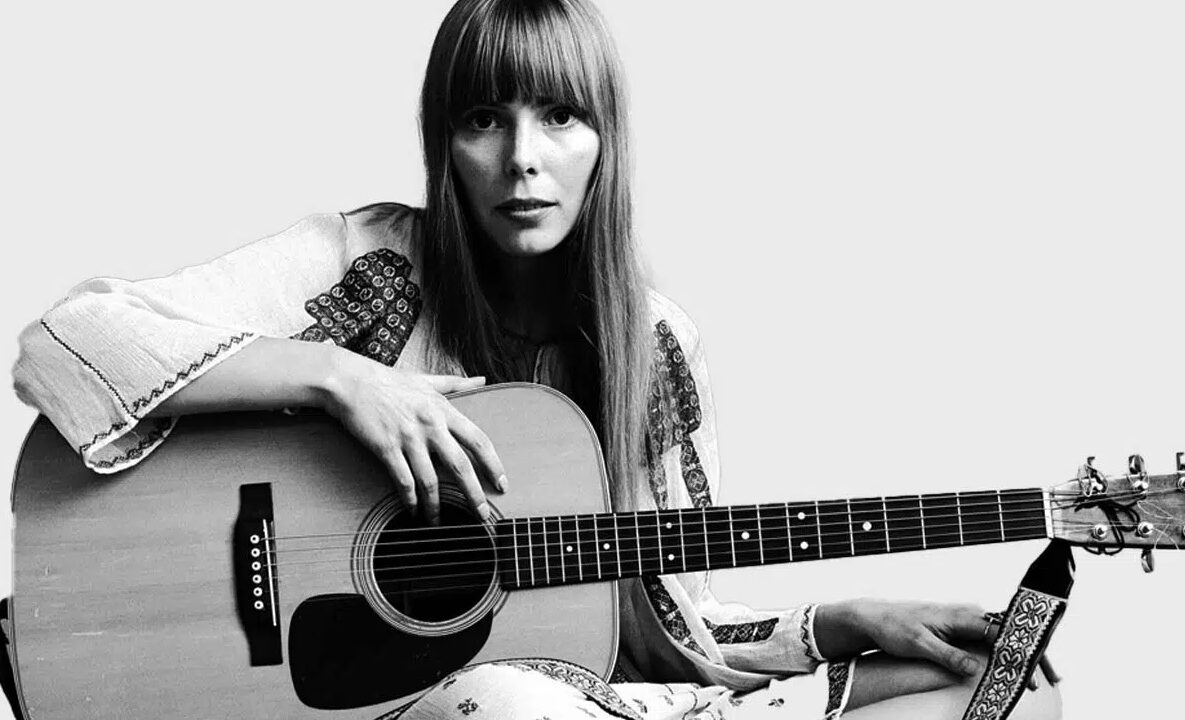 Photograph by Jack Robinson, the Jack Robinson Archive; www.robinsonarchive.com.
Photograph by Jack Robinson, the Jack Robinson Archive; www.robinsonarchive.com.
Last month, I took the 9:30 AM from JFK to Seattle, where my mother met me at SeaTac with a car full of camping gear. We drove over the mountains and into the wide, dry part of the state, dipping down to cross the Columbia River—the much-dammed snake that flows down from Canada and through central Washington until shifting west to the Pacific to make a rippling border with Oregon—and then up again in a road cut through black basalt cliffs. The sky here is big, like Montana, and even in June the grass is yellow and dry; the land is a maze of cliffs and canyons, cut during the last ice age when a dam burst on a vast lake covering much of Montana and northern Idaho, and drained to the Pacific in two days flat, carving out the land like worms cut through cheese. We were here, in this dramatic canyon country, to see Joni Mitchell sing.
It was a fitting landscape for Joni Mitchell, expansive and wild and changeable, full of turns and hidden vistas, caves and tunnels. She herself, famously, has lived part-time in her own canyon since the late 1960s, Los Angeles’s Laurel Canyon, which she helped revive as a glam hippie enclave. That Joni Mitchell was playing a show at 79 wasn’t quite believable: in 2015, she suffered an aneurysm and was found after three days, unconscious on her floor. She had to learn how to get out of bed again, how to move, how to speak, how to sing, how to play an instrument—and her hands had always been weak after a bout of childhood polio, leading to her famously unorthodox guitar tunings. As she recovered, she met the singer Brandi Carlile and invited Carlile over to jam, asking her to bring a few musicians. Carlile came and it became a regular event, one central to Mitchell’s recovery. As Carlile later said, “Joni’s house is so cool!” and it totally is because who dropped in but Chaka Khan, Herbie Hancock, Bonnie Raitt, Paul McCartney, Elton John. That Joni Mitchell was recovering—and beginning to play music again—felt legendary, in the old sense: an account of the life and deeds of someone distinctive, someone held with reverence.
To see a legend takes a long time. We waited in a line of idling cars to get into the venue; waited to have our car sniffed for narcotics and firearms by a K-9; waited all day to get ready to wait in line for the venue to open at 5 PM; waited to buy a seltzer at the general store. Our campsite was in a giant hayfield, and was in fact not so much a campsite as much as cars parked next to each other with tents in the allotted space behind. The vibe was very West Coast: everyone looked like someone I’d played in a Seattle band with a decade ago. Cowboy boots and fleece, a lot of craft beer and sleeve tattoos, #vanlifers with fedoras and rainbow Pendleton blankets, earth-toned knitwear and dusty Chacos (the “pretty” kind with the toe loop), big Indigo Girls energy. I’ve been in New York too long; I don’t own clothes like this anymore.
I don’t know what Lilith meant to anyone else, and I wasn’t there, but I know I felt the moment that birthed it.
The Columbia Gorge amphitheatre is a grassy funnel-shaped lawn facing west across the river at one of its most beguiling points, right where it makes a series of S curves through the mesas. The thing about the west is that it actually does look like a WPA postcard: a thumb of cliff sticks into the river and the sun sets behind the canyon, and the water gleams like silver. It even smells of sage. It’s a landscape worthy of Georgia O’Keeffe (another legend), because she knew this about the harsh landscapes of the west: you never see it well enough. You always want to spend more time with it, see farther, see better. It’s land on a legendary scale.
This amphitheatre was, a quarter-century ago, host to the three years of Lilith Fair, a feminist music festival that toured from 1997 to 1999, organized by Sarah McLachlan and featuring only women performers in an effort to mitigate a male-dominated industry that wouldn’t play two female artists consecutively on the radio, wouldn’t book two women on the same show, as if women were a niche market but men’s music was universal. Looking at the tour list over Lilith’s three year run you find all the Nineties greats: Fiona Apple, Tracy Chapman, Liz Phair, Missy Elliott, Queen Latifah, Sinéad O’Connor, Suzanne Vega, Erykah Badu, Natalie Merchant, the Indigo Girls, Jewel, Lucinda Williams—plus Emmylou Harris, presiding in state, and, just starting out on the side stages, Neko Case, Christina Aguilera, Angelique Kidjo.
I don’t know what Lilith meant to anyone else, and I wasn’t there, but I know I felt the moment that birthed it. My personal Nineties felt like this: I was still in high school in Seattle, feverishly making mixtapes of all the Lilith Fair musicians I’ve just named, and having feelings about a breakup, which involved playing one Indigo Girls track on repeat for nearly two months. (Which album, which track? If you remember that moment, you already know.) My friends and I wrote confessional slam poetry and read it in cafés. We marched on the WTO and shopped secondhand. That moment in the late Nineties, with Lilith touring and Buffy on TV and Riot Grrrl exploding in Olympia an hour and a half down Interstate 5, all running over the bass track of the anti-globalization movement’s hope that another world was possible—it, too, felt as world-historic as the women’s liberation movement that had made it possible.
My Eighties childhood had prepared me for this moment: I had been raised on Free to Be You and Me, been given androgynous bowl-haircuts and brown Oshkosh B’Gosh overalls to wear, for-kids biographies of Susan B. Anthony and Harriet Tubman and Marie Curie to read. My mother had hit the tail end of second-wave feminism, had been the first in her working-class small-town family to go to college, had become a respected research scientist. She had faced, in “hard” science in the Seventies and Eighties and Nineties and still the 2000s, hundreds of misogynist insults, large and small, and she had spent much of her career mentoring and support younger women in science. All this has made her strong, and she made sure to pass her own fighting spirit on to me. A picture of Susan B. Anthony has hung above her office desk ever since I can remember, printed with Anthony’s quote, “Failure is Impossible!” This was our household scripture.
My childhood, my adolescence, were in many ways the dream of my mother’s generation’s feminism, and the fruit of its rough flowering. As a child, the first and second waves of feminism were legends to me, and I could reverently recite the few names I knew: Gloria Steinem, Angela Davis, Bella Abzug, Shirley Chisholm, Susan B Anthony, Elizabeth Cady Stanton, Sojourner Truth. It is a measure of the great gift as well as the blindness of this inheritance that my journals of this time lament, why is there nothing left for women to fight for? I imagined feminism as a series of firsts, like my mother. I knew the first woman to go to space (Sally Ride), the first woman—the first Black woman, at that—in Congress (Shirley Chisholm), the first female doctor in the US (Elizabeth Blackwell), the first woman to run for president (Victoria Woodhull). This was my frame of reference: I couldn’t think of any other firsts.
To myself now, or to any reader today, it’s achingly obvious that this was partial, a child’s feminism: I didn’t know, for example, that my childhood coincided with Operation Rescue’s reign of terror, bombing abortion clinics and murdering abortion doctors; or that just a few years earlier, Toni Morrison had won the Nobel Prize (the first Black woman to do so, childhood me would add), and had, with June Jordan and Audre Lorde and Maxine Hong Kingston and so many others, carved a path for women of color through the center of American culture by refusing to write for white America at all. What I did have was a feeling for the past, and I understood history as first, respect, and second, commitment. Feminism, I knew even then in my inchoate way, was about myself and it was about the world, and it was a way to connect myself to the larger world. It was a way to give my life meaning and it was a way to make the world more just for everyone. I desperately wanted these things—world, meaning, justice—and so feminism was a legend to me, then and now, in the cartographic sense: the key to charting a course through life, whatever it might turn out to be.
It occurred to me, looking out at 26,000 people holding up their light just because Joni Mitchell liked how it looked, that writers don’t often get to see all the people who are changed by their books
Joni Mitchell was my mother’s music, but it was my friend Anna—beautiful artistic Anna—who first played her songs for me, and I knew that these were the kinds of songs women played for each other because they meant more than other songs. Anna put “Blue” on a tape she made me, that raw track with its delicate descent into madness, Acid, booze, and ass / Needles, guns, and grass / lots of laughs—lots of laughs. Was this even a real melody? Mitchell’s songs told about the world I knew but transformed it; they sounded like the vividness in the sky when the sun shone on a raincloud about to break. The string of albums through the Seventies were ours, mine and my girlfriends’: Ladies of the Canyon, Blue, For the Roses, Court and Spark, Hejira. Joni Mitchell searched for things, and her seeking was more important than feeling fine, than a I-IV-V progression, than anything else in this world. The opening track of Court and Spark said it all: We love our lovin’ / But not like we love our freedom.
What did it take for Joni Mitchell to love her freedom? In her recent book Monsters: A Fan’s Dilemma, the critic Claire Dederer (also a Seattle girl, who, for the record, has written the best grunge memoir by a woman I have ever read, Love and Trouble), borrowing a notion from Jenny Offill, writes about Mitchell as an art monster, a woman who committed the worst offense in the eyes of society: putting her own work before motherhood.
At age 21, Roberta Joan Anderson married her first husband, folk singer Chuck Mitchell, just a few weeks after putting her newborn daughter into foster care, too broke to afford to keep her. Later, Joni Mitchell (as she became known thereafter), said that Chuck had agreed to help parent her daughter and so she married him to save the “shame and scandal,” but as soon as they were married, he recanted, refusing to raise another man’s child. Joni Mitchell’s daughter was put up for adoption, as she chronicled in the song “Little Green.” Mitchell later said that her inability to care for her daughter and the betrayal of her first marriage was the moment her songwriting began; and it waned more than thirty years later after she finally met her daughter in person. Does art come at the expense of children—or rather, perhaps, do children take the place of art? Maybe. This isn’t a triumphant story of a strong self claimed, as an easy power-feminist tale would make it out to be. Rather, it’s the kind of complicated feminist tale worth telling, the kind Joni Mitchell always told us: here is a woman who made choices, and how much they hurt, and what she did with the hurt and the choices both. And what Joni Mitchell did with her hurt and her choices was to reinvent what songwriting could be from the fragments of her own life.
My mother had made a different set of choices, a different life: to her, raising a child was feminist work, and she insisted that she could do both vocation and single motherhood. She ran an entire lab and she hand-sewed my Halloween costumes, she won research grants and she insisted on making me breakfast every morning until I left for college. How she managed this, I have no idea; when I look at pictures now, she looks lovely but exhausted. My guess is that her determination was built on her own choices, and her own hurts. Joni Mitchell’s music was a shining reflection of this most personal of dramas—what a woman makes of her life.
Now here Joni Mitchell was in front of my mother and me, on a stage set made to look like her own living room with big Victorian chairs and couches. The stage was a recreation of the jam sessions Mitchell had been hosting in Laurel Canyon during which, one blessed evening, she first sang again after the stroke—a line from Gershwin’s “Summertime.” She wore a beret and a pink-patterned flowing shirt, still with her long yellow braid. She used her cane like a scepter and like an instrument. She sang with a voice that had learned how to sing, twice over now. Brandi Carlile hosted, singing the lead delicately with Mitchell where Mitchell could not (oh those high flights) and dropping back discreetly when Mitchell’s voice grew stronger. Friends—such friends!—Annie Lennox, Sarah McLachlan, Celisse, the duo from Lucius, Marcus Mumford, more—surrounded, and on playing a cover for Joni, several kissed her hand like she was a queen. “We love you so much!” Carlile said, over and over. Mitchell asked the audience to hold up lights, and when 26,000 people held up their phone flashlights, she told us “you’re like a constellation!” The real stars came out, and the bright planets, and then the Big Dipper straight overhead. It wasn’t a concert as much as a great act of love and reverence. We were watching a woman with a blazing gift see what she had made and granting her that gift in kind.
It occurred to me, looking out at 26,000 people holding up their light just because Joni Mitchell liked how it looked, that writers don’t often get to see all the people who are changed by their books. As Joanna Biggs has written so movingly in her recent book A Life of One’s Own, the conversation between women writers happens in print and often after the writer herself is dead, a chain of words and references and readers passed down. It’s the same for most activists (though Angela Davis can fill the hell out of a giant conference center)—knowledge and traditions decentralized and passed down secondhand, in small study groups and movement organizations, in well-underlined books found in used bookshops.
Just before leaving to see Mitchell play, I was at a party in New York of a cross-section of older New York writers, most of them Jewish, most of them feminist second-wavers who remembered the Old Left and had fought the battles of the New, and who were still writing as avidly as they had ever done. Only a few of us at the party were “young” (and I am technically middle-aged), and we were there in honor and awe of them, still. The party was to celebrate the critic and memoirist Vivian Gornick, now in her 80s, who had just been inducted into the American Academy of Arts and Letters but who had labored for decades as a freelance literary critic and a writer’s writer, a lifestyle that was barely affordable then and definitely isn’t now. It’s only in the past few years that Gornick has had a flurry of major recognitions: winning the Windham Campbell Prize, the Paris Review’s award for lifetime achievement, a reissuing of her out-of-print backlist. I know she would hate it if I call her venerable, formidable, or worst of all inspirational, so all I’ll say is that here she was in her trademark silver eyeshadow, standing on this balcony with a view of the midtown Manhattan skyline, a little giddy at the fuss and a little suspicious of everyone else for making one, since her work, to her, is never good enough. (That’s why she’s so good.)
The women I know in New York, my mother, all the legends—they are the real canyon ladies.
I was talking to the writer and activist Alix Kates Shulman—Shulman’s Memoirs of an Ex-Prom Queen was one of the first best-selling novels to come out of the Women’s Liberation Movement—now in her 90s, who pointed out a church across the street to me. “I’m pretty sure that’s where we organized some of the early Redstockings programs,” Alix told me, Redstockings being one of the feverish, excited groups churning and splintering out of the early days of the second wave, founded by Shulamith Firestone and Ellen Willis. Shulman asked after my love life; I hadn’t even remembered telling her about some silly relationship drama when I saw her last year, but Alix is attentive like this: when she and I were editing separate feminist anthologies at the same time, I sent over permissions research and she sent on, unasked, a blurb for my book. I said hello to Vivian’s agent Charlotte Sheedy, who has shepherded work by so many feminist writers (just for starters: Audre Lorde, Pauli Murray, Ann Snitow, Marilyn French); the next day, Charlotte sent me a new manuscript and some ideas for reissuing out of print feminist classics.
These legends of New York—leftist, Jewish, feminist, vital and brash and reading everything and talking a mile a minute—you, I thought to myself, deserve your own constellation of 26,000 people too. You are what New York City always signified to me and what I always wanted from it. If it was my childhood reverence for Ms. that brought me here, it was Gornick’s The Odd Woman in the City that brought me back again after moving away, that taught me how a woman like me might live in a city made of buildings and people and ideas rather than trees and music, and how I might make a vital life. Here is where, in my small way, there is feminist work that I can do, and, I hope, do well. Though publishing feminist writing is not the same as a rock concert tour, it too creates a constellation of readers over time in the way that the stars come out at night—one, by one, by one, until you realize the whole sky is ablaze.
At the party, Manhattan’s skyscraper canyons slowly turned to twilight. Here on this balcony was a moment in American feminism and American letters whose principals will be gone sooner than I’d like, and with it, a substantial percentage of New York’s meaning to me. With the evening years of these women, it seems, also comes the twilight of the feminism they fought for: Roe, unthinkably, overturned—the Comstock Act that had once muzzled Margaret Sanger’s efforts to distribute birth control now renewed with vigor to block abortion pills—Toni Morrison’s writing, and Margaret Atwood’s, banned in school libraries—things I had taken for granted all my life, evaporating under my feet. The personal and the political losses pile up. “What are you writing, Alix?” I asked. “I only write obituaries for my friends these days,” she said.
Watching Brandi Carlile onstage with Joni Mitchell a week later, I thought, this is reverence work. “I went to all three Lilith Fairs,” Carlile told us, “and it changed my life.” She didn’t say this from the stage, but she’d gone on to book an all-woman festival, and tour with an all-woman all-star band, The Highwomen, a nod to Johnny, Willy, Waylon, and Kris’s supergroup The Highwaymen. Most poignant to me was when she said, “I don’t know what it’s like to have the kind of drive Joni does, something driving through me that has to get out.” What she meant, I think, was that Joni was a legend that had carved routes the way water carves canyons, and she, Carlile, traveled through those canyons. I loved Brandi Carlile in this moment: I thought, I see you.
One of Mitchell’s more famous songs makes a world of women, using three of her friends in Laurel Canyon and making of everyday life—baking brownies, gathering flowers—and creative work—Trina takes her paints and her threads / she weaves a pattern all her own—a world. Then she gave it to us, to live in too, this canyon of women. At roughly the same time a coast away, Vivian Gornick wrote of discovering feminism for the first time, “as though light and music were bursting across the top of my skull.” “I stood in the middle of my own experience,” Gornick wrote, “turning and turning. In every direction I also saw a roomful of women turning and turning.” During the concert, I turned once to look at my mother, and she had an expression of happiness on her face that I rarely see—the pure joy of recognition, a person seeing something in her heart finally matched by the world outside of it. Both of us were in tears.
Though we are at a moment now when, as my childhood self would have said, there is something to fight for at last!, we are not without a map, nor without a route to follow. The women I know in New York, my mother, all the legends—they are the real canyon ladies.
Your support matters…Independent journalism is under threat and overshadowed by heavily funded mainstream media.
You can help level the playing field. Become a member.
Your tax-deductible contribution keeps us digging beneath the headlines to give you thought-provoking, investigative reporting and analysis that unearths what's really happening- without compromise.
Give today to support our courageous, independent journalists.

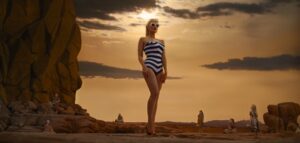
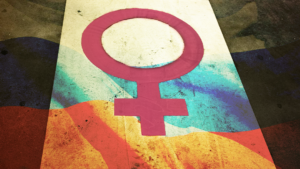
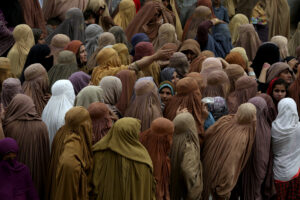
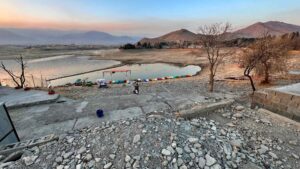

You need to be a supporter to comment.
There are currently no responses to this article.
Be the first to respond.